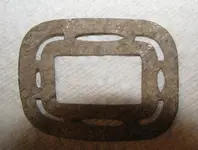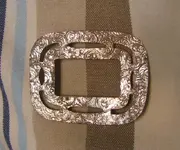RPG
Bronze Member
OK guys. I need a little help here.
I found this button in the hay field last weekend quite a ways from the homesite. It was in a place that stays very wet during the winter and very dry during the summer and very deep. The dirt is like concrete on it. Toothpick wore down to a nub and didn't even scratch the crud. Today I boiled it in peroxide for four hours hoping to see a backmark. The first pic is before and the last two are after the peroxide. As you can see, there is still a lot of the concrete like stuff still on it. should I keep boiling it or is it a lost cause that I should just leave as is? I'm pretty sure it's brass as the front has a dark green patina. It also looks like it is cast. What do you think?
I found this button in the hay field last weekend quite a ways from the homesite. It was in a place that stays very wet during the winter and very dry during the summer and very deep. The dirt is like concrete on it. Toothpick wore down to a nub and didn't even scratch the crud. Today I boiled it in peroxide for four hours hoping to see a backmark. The first pic is before and the last two are after the peroxide. As you can see, there is still a lot of the concrete like stuff still on it. should I keep boiling it or is it a lost cause that I should just leave as is? I'm pretty sure it's brass as the front has a dark green patina. It also looks like it is cast. What do you think?




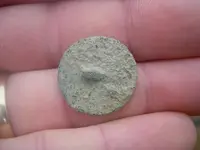
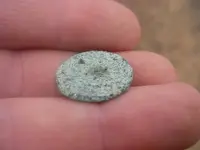
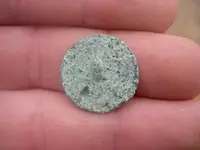
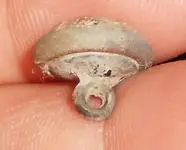
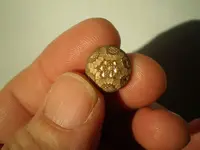
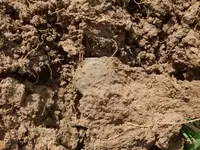
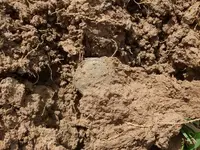
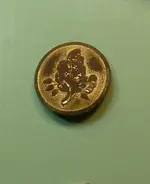

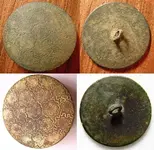
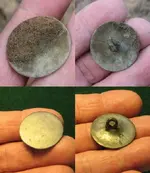

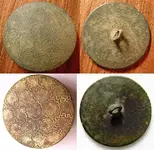
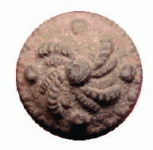
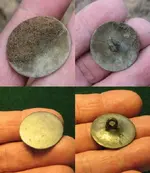
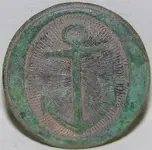
 And WELCOME to TREASURENET
And WELCOME to TREASURENET 
